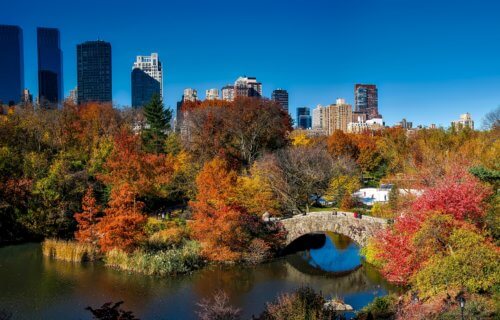PLYMOUTH, United Kingdom — Walk along any busy city center and you’ll likely see some cigarette smokers along the way. City life and cigarette use tend to go hand in hand. This is perhaps one reason why a new study finds living near green spaces can lower rates of smoking and produce better odds of kicking the habit once. Even if you’re not looking to relocate to the country, researchers say moving a few blocks closer to the local park may prove useful in avoiding tobacco.
Conducted by a team at the University of Plymouth, this is the first piece of research to show that access to nearby green spaces is linked to lower rates of smoking. Interestingly, this finding is due to the fact that such green areas promote higher rates of kicking the habit, not lower cigarette use in general. In other words, plenty of people who live near nature still smoke cigarettes, but more of them are able to successfully quit. This eventually leads to overall lower numbers of habitual tobacco users.
Researchers examined health data, local neighborhood and lifestyle factors of over 8,000 U.K. residents in this study. Nineteen percent describe themselves as current smokers and 45 percent had been a regular smoker at some point in life.
The more green, the better
Notably, even after accounting for other possible smoking factors like socioeconomic status researchers say people living near lots of green spaces are 20 percent less likely to be current smokers than others living in less green regions. People who had already stopped smoking habitually are also 12 percent more likely to live in a greener area.
“This study is the first to investigate the association between neighborhood green space and smoking behaviors in England. Its findings support the need to protect and invest in natural resources – in both urban and more rural communities – in order to maximize the public health benefits they may afford. If our findings are substantiated by further work, nature-based interventions could be prescribed to assist individuals attempting to give up smoking,” explains lead author Leanne Martin in a university release.
Less stress means less smoking
The research team says green spaces represent an underutilized aspect of helping people quit cigarettes. Especially since many turn to cigarettes for stress relief, and spending time in nature has been shown to reduce stress. Additionally, this certainly isn’t the first time studies revealed a link between green spaces and health benefits. Prior research shows being able to see nature daily results in less cravings for alcohol, cigarettes, and junk foods.
“Despite a decline in prevalence within the general population over the last decade, smoking remains a devastating and global public health issue. Governments across the world spend billions each year trying to tackle it, both in an attempt to improve public health and reduce the strain on health services. This study emphasizes the need to preserve existing green spaces and expand the development of new ones,” comments co-author Mathew White from the Universities of Vienna and Exeter.
“While there is now considerable evidence that natural spaces are associated with stress reduction and better well-being, this is the first study to my knowledge to show that more green space is also linked to a reduction in unhealthy behaviors. This is intriguing and suggests that the benefits of natural green and blue spaces may reach even further than initially thought,” concludes co-author Sabine Pahl.
The study is published in Social Science and Medicine.
